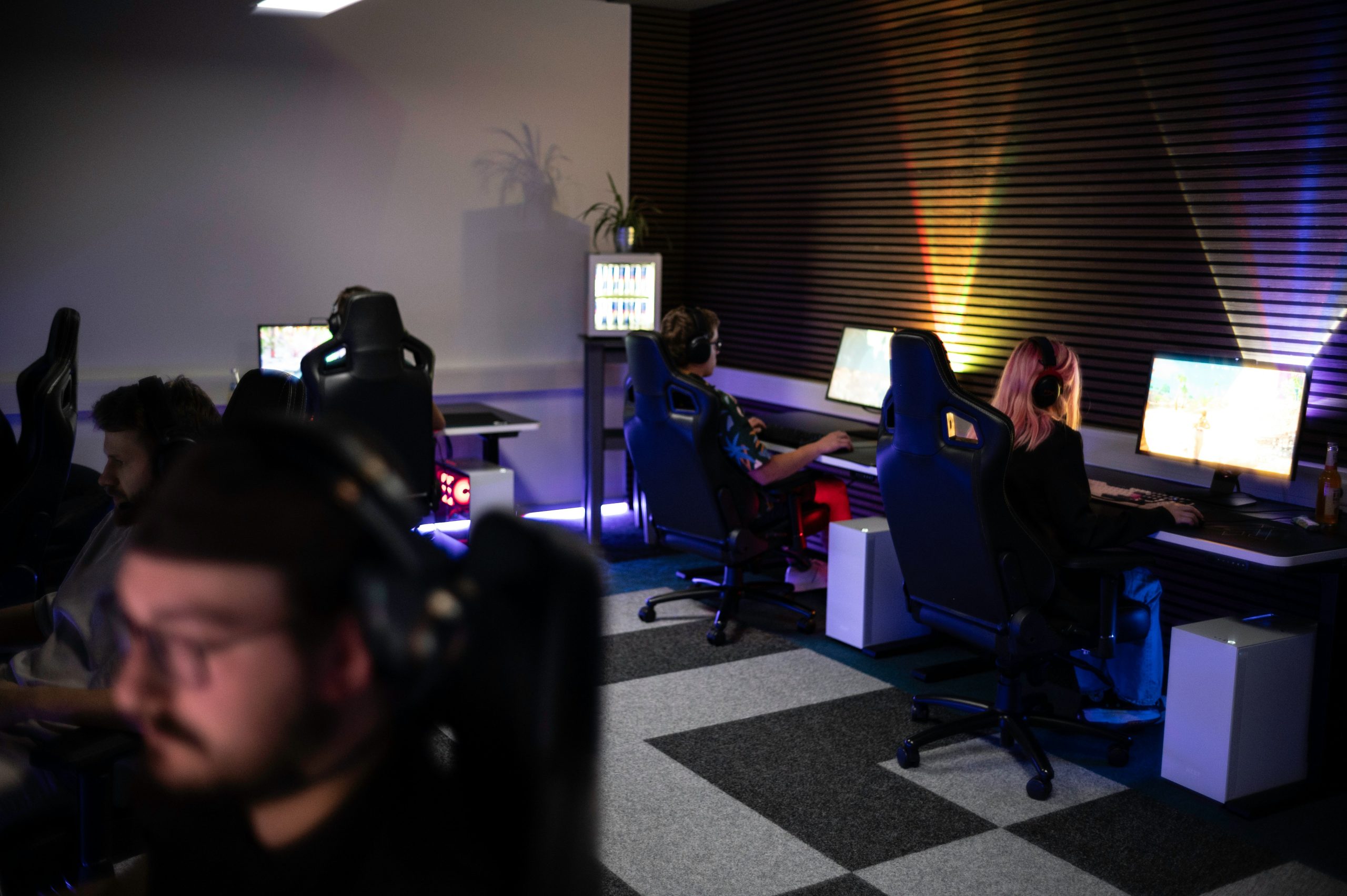In the ever-evolving landscape of online gaming, where customization meets competition, group tags have long been a badge of honor for players seeking to showcase their affiliations and achievements. As the much-anticipated Counter-Strike 2 (CS2) continues to captivate gamers worldwide with its stunning graphics and refined mechanics, an intriguing question arises: Can you still display group tags in this new iteration? Whether you’re a veteran player or just stepping into the fray, understanding how to navigate these nuanced features can enhance your gaming experience and solidify your identity within the community.
This complete guide delves into the intricacies of displaying group tags in CS2, illuminating the pathway for players eager to represent their teams with pride. From exploring initial settings to troubleshooting common issues that may arise along the way, we’ve got you covered. Join us as we unravel whether this beloved feature remains intact and how you can make it work for you in your next match. Get ready to elevate your gameplay and stand out among friends and foes alike!
Contents of Post
What are Group Tags?
Group tags are essential tools in the world of collaborative gaming, acting as both identity markers and organizational aids within a community. They allow players to categorize themselves based on interests, skills, or play styles, fostering connections among like-minded individuals. These tags can enhance the gaming experience by simplifying the process of finding teammates for particular game modes or events—whether you’re diving into competitive matches or casual player-versus-environment sessions.
Moreover, group tags offer a sense of belonging and recognition within vast online ecosystems. They empower players to showcase their achievements and expertise while encouraging new members to engage with existing communities. This social aspect is especially critical in games like CS2, where teamwork is pivotal. By leveraging these tags effectively, players can curate their participation and brand themselves uniquely within the expansive universe of multiplayer gaming. In essence, group tags not only enrich personal gaming journeys but also strengthen community bonds that elevate the overall multiplayer experience.

Importance of Group Tags in CS2
Group tags serve as an essential navigational tool in Counter-Strike 2 (CS2), offering players a streamlined way to organize their experiences and identify fellow gamers. These tags not only enhance team synergy by allowing players to quickly ascertain the roles or specialties of their teammates but also foster a sense of community within the game. For new entrants, understanding group dynamics is crucial; tags can signal alliances, denote skill levels, and even highlight preferred play styles.
Moreover, the use of group tags transcends mere identification—they inspire collaboration among players who share similar goals or playstyles. By categorizing groups based on tactics or strategies, players can more easily connect with others who align with their vision for victory. This fosters deeper relationships that extend beyond gameplay itself, inviting discussions about strategy and shared gaming experiences. In a competitive landscape like CS2, leveraging these social tools can be vital not just for winning matches but for enhancing one’s overall gaming journey.
How to Enable Group Tags
To enable group tags in CS2, first navigate to the settings menu where customization options reside. Inside the interface, look for a section labeled “Group Management” or “Tags.” By activating this feature, you will unlock a dynamic way to organize and categorize your groups, a tool essential for managing larger projects and collaborations. This ability to tag enables seamless navigation within your workspace as it allows you to filter related elements quickly.
Once enabled, take advantage of the tagging system by creating meaningful labels that reflect not just function but project priorities. Consider using color codes for visual differentiation; this can enhance visibility during workflows and make it easier to spot vital elements at a glance. Experimenting with different tag combinations can also spark innovative collaboration—think cross-pollination of ideas across tagged groups. In an environment where clarity is key, leveraging group tags could ultimately streamline communication and foster productivity like never before.

Displaying Group Tags Effectively
When considering how to display group tags effectively in CS2, it’s vital to prioritize clarity and visual hierarchy. A well-structured layout not only provides immediate context for each tag but also enhances user engagement by guiding their exploration of your content. Utilize color-coding or icons that resonate with the theme of each group; for instance, a warm palette could embody community-driven groups while cooler tones can represent more formal or professional clusters. This simple touch creates an intuitive experience where users can quickly discern the nature of the groups at a glance.
Moreover, don’t underestimate the power of interactivity in keeping your audience involved. Introducing hover effects or expandable sections within your tag display allows users to delve deeper without overwhelming them at first glance. By incorporating tooltips or quick info pop-ups, you deliver additional context for each group tag seamlessly, ensuring users remain engaged instead of feeling lost in static information. Finally, ensure responsive design principles are front and center; optimizing how these tags adjust across devices not only improves accessibility but also enriches the overall user experience on any platform.
Troubleshooting Common Display Issues
Display issues in Creative Suite 2 (CS2) can be frustrating, especially when your workflow is interrupted by unexpected glitches. One common issue arises from improper file formats – ensuring that images are saved in compatible types like JPEG or PNG can prevent many display problems. Additionally, older graphics drivers might be the culprit; updating your GPU driver can enhance compatibility and performance across various applications, not just CS2.
Another often overlooked aspect is monitor calibration. Sometimes, the colors displayed may not accurately reflect what you see in CS2 due to color profile mismatches. By calibrating your monitor and verifying that both your software’s color settings and system preferences align, you’ll ensure a more precise representation of group tags as intended. Keeping an organized workspace also minimizes clutter on-screen—close unnecessary windows to help maintain a streamlined view for better tag visibility. Remember, sometimes the simplest fixes yield the most effective outcomes!

Alternatives to Traditional Group Tags
As digital communities evolve, so too do the ways we categorize and engage with each other. While traditional group tags served as handy shortcuts for identification and interaction, emerging alternatives are reshaping how connectivity is fostered within online spaces. One such alternative is the use of dynamic interest-based groups, where members self-select into categories closely aligned with their specific passions and skills. This method not only promotes a sense of belonging but also enhances user experience by curating content tailored to individual preferences.
Another innovative approach involves leveraging AI-driven recommendations based on user behavior and interactions. Instead of static tags, platforms can analyze activity patterns to suggest relevant communities or topics organically. This shift not only reduces clutter from outdated or irrelevant tags but keeps users engaged in a flow that aligns with their evolving interests. As online environments become more adaptive and personalized, these alternatives promise a richer tapestry of connections that transcend traditional tagging systems while fostering deeper engagement among community members.
Conclusion: Final Thoughts on Group Tags
In conclusion, group tags represent more than just a method of organizing content within CS2; they symbolize the interconnectedness of communities and the collaborative spirit that thrives in the digital landscape. As we navigate an ever-evolving platform, understanding how to effectively display and manage these tags not only enhances user experience but also fosters a sense of belonging among members. Group tags can serve as beacons of interest, guiding users toward relevant discussions and facilitating meaningful connections.
Moreover, as technology progresses, there is potential for enhanced functionalities surrounding group tags in upcoming updates or iterations beyond CS2. This opens doors for innovations such as customizable tag systems or algorithm-driven recommendations based on tag interactions. Embracing these developments will empower users to curate their experiences actively and highlight the diversity within their interests. By leveraging the full potential of group tags, we can transform our digital interactions from mere transactions into vibrant conversations that resonate deeply with community values.

